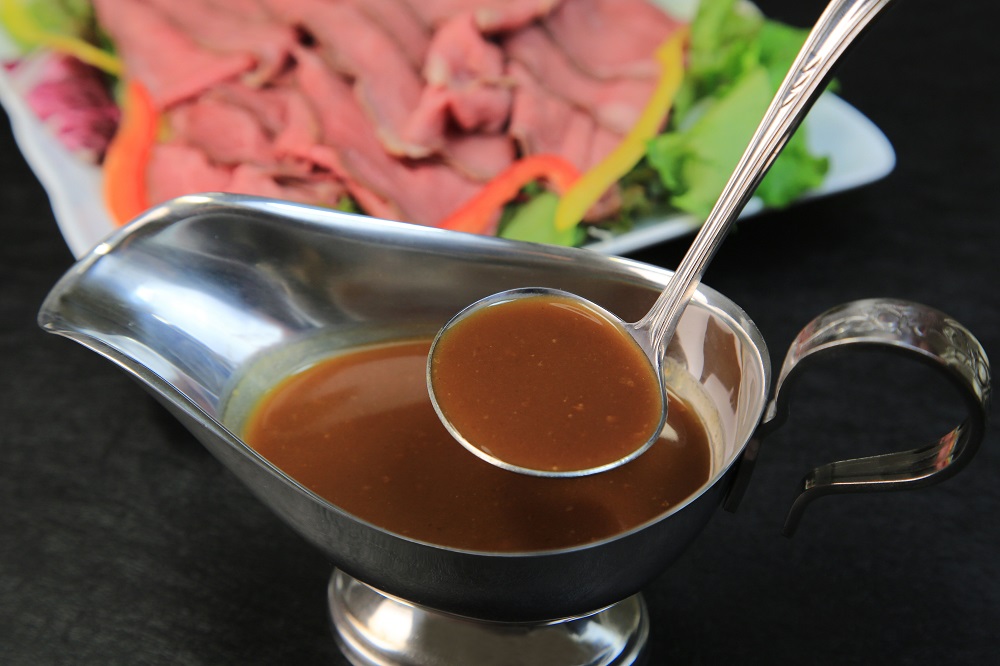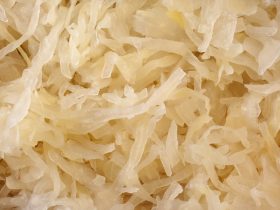Gravy in its most common form is simply the lipids and similar liquids that are effused from meats while cooking and are then subsequently thickened using flour or cornstarch. Though there are other forms of gravy such as instant broth or vegetable gravy, it is this meat-sourced gravy that is found in most traditional gravies1.
It is because of the particular constituents of gravy that it is so susceptible to spoiling if not stored in the best possible conditions.
Yes, gravy may be frozen, though this will depend on the sort of ingredients that were incorporated into the gravy while cooking. The exact length of time it was left out in the open will also shorten its shelf-life, so it is important to keep these factors in mind while preserving your gravy.
Can You Freeze Instant Gravy?
Instant gravy most commonly consists of powdered broth as well as certain types of thickeners depending on the exact brand that has been purchased. Because of their dehydrated nature, they will last for quite some time within their packaging, and as such usually do not require freezing.
However, should you have already reconstituted the gravy or have opened the package but allowed it to remain in its dehydrated form, the gravy may develop fungal spores if left out in the open for an extended period of time.

While most food and packaging companies process their gravy in such a way that they are relatively microbiologically sterile within their storage packaging, once the container has been compromised, the gravy will be at risk of contamination. Even with the added preservatives many companies introduce to the gravy, it is only a matter of time until the instant gravy becomes unsafe to eat.
As such, it is advisable to move the powdered or reconstituted gravy to a resealable air-tight container and to place it in the freezer for up to six months. Ensure that the container is slightly larger than the total volume of the gravy if you have reconstituted it, as the liquid will expand once frozen.
Does Freezing Gravy Make It Solid?
Yes. Despite gravy being primarily consisting of lipids and amino acids secreted by the meat as it is cooked, there are still hydrogen molecules present within the molecular matrix of the gravy, and as such they will align themselves in a hexagonal and more broad structure when subjected to freezing temperatures2.
In layman’s terms, this means that the gravy will indeed freeze solid, even if it mostly consists of fat. Because of this phenomenon, gravy will often require thawing prior to being used. Should you wish to avoid this delay before serving the gravy, it is possible to refrigerate it instead.
How to Prepare Gravy for Freezing
Before even beginning to freeze your gravy, it is best to first allow it to cool to room temperature. This is done because placing any sort of hot object within the freezer will cause steam to form and therein successively allow water to condensate both along the inside of the storage container and the freezer itself.
This will make it both difficult to defrost the gravy as well as cause your freezer to develop a thick layer of ice along its walls, necessitating a defrosting of the freezer.
Apart from allowing the gravy to cool down, you will also require a spoon, a resealable plastic pouch and a freezer capable of reaching temperatures as low as 32°F.
How to Freeze Gravy
Freezing gravy is quite simple. After gathering the required equipment and allowing the gravy to cool to a temperature low enough that no steam will form, simply spoon the gravy into your resealable plastic pouch.
Ensure that there is approximately an inch of space between the top of the gravy and the opening of the pouch, as the gravy will expand and may rupture the bag if there is not enough open space.
Place the bag of gravy to be frozen within the deepest part of your freezer, far from any source of rapidly moving air such as a vent or freezer fan.
If all conditions are found to be ideal, gravy will last for up to four months in the freezer so long as it is not repetitively thawed and then frozen.
How to Thaw Gravy
In order to thaw your previously frozen gravy, first remove the gravy from the freezer and place in the fridge overnight or for at least six hours. Keep the gravy away from the crisper drawer as this may cause condensation within the plastic bag.
Once sufficiently liquid again, heat a sauce-pan at low heat and pour the gravy into the pan.
Stir the pan constantly so as to prevent the formation of any clumps. If the heat is too high, this may cause the flour within the gravy to congeal, creating an uneven and sticky texture.
After sufficiently heating, plate the gravy and serve immediately.
What to Do if Gravy has Separated During Storage
In the event that the rapidly changing temperatures of storage have caused your gravy to separate, or if you have cooked it improperly, gravy must be either re-emulsified or a binding agent should be introduced.
To do so, simply add more flour while stirring the gravy on a saucepan at low heat. This will act as a thickening agent and allow the meat-juices to reintegrate into the entirety of the sauce.
Otherwise, if this is not possible or there is no flour available in your kitchen, one may place the gravy in a food processor or blender and blitz it at low speeds. Bullet blenders will work best for this option, as higher pressures will cause the gravy to re-emulsify more quickly.
It is important to first thaw your gravy completely before attempting either of these steps, as frozen gravy will damage the blades of your blender or food processor.
References
1. Peter, K.V. (2012). Handbook of Herbs and Spices. Woodhead Publishing Series in Food Science, Technology and Nutrition. Elsevier Science
2. R. Nave. (N.D.) “The Expansion of Water Upon Freezing” HyperPhysics Chemistry Governors State University Chicago Southland http://hyperphysics.phy-astr.gsu.edu/hbase/Chemical/waterdens.html





Hi, I'm Dom
Dom Eats was started to help other people fall in love with food. While cooking can feel intimidating, it doesn't have to be.